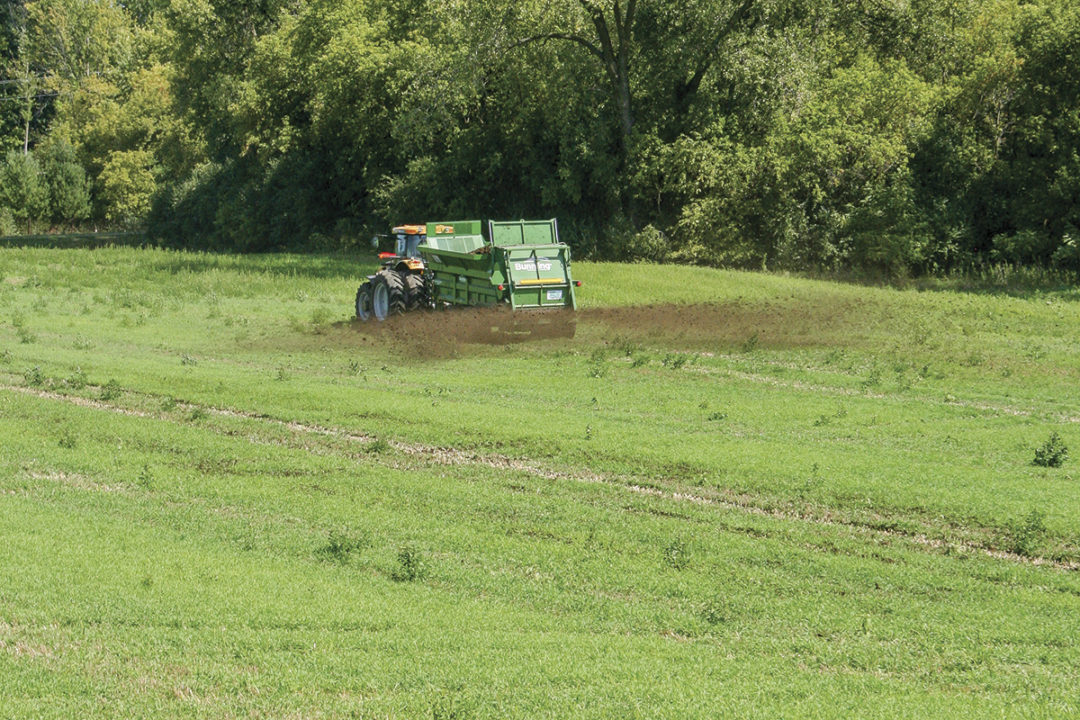Nitrogen is necessary for high production, but what if you are looking to increase the production of pasture? Steve Norberg, Ph.D., regional forage specialist at Washington State University, has some guidance.
To best understand how to manage nitrogen, you must first understand what affects nitrogen. Nitrogen circulates in nature in several different forms known as the nitrogen cycle. Nitrogen changes into different forms through microbial transformations. The steps of the cycle, which are not necessarily sequential, include nitrogen fixation, nitrogen assimilation, ammonification, nitrification and denitrification.
Nitrogen fixation by a bacteria known as rhizobia and nitrification are parts of the nitrogen cycle desired by plants and those who grow them. Nitrification is carried out by nitrifying bacteria, transforming soil ammonia into nitrates which plants can utilize. Fixation of nitrogen can come from atmospheric nitrogen to inorganic fertilizers such as nitrate form or ammonia forms and by rhizobia, which converts soil nitrogen gas (nitrification and ammonification) to a form used by plants.
Saturated soils, such as those with standing water for more than two days, undergo denitrification and nitrogen goes back into the atmosphere as a gas, which is unusable by plants, or leaches deeper into the soil profile, where it is unusable and can end up in groundwater.
Ideally, you want nitrogen to leave your pastures in the form of plants consumed by the animals grazing on them, says Norberg. Increased nitrogen in pasture soil increases the amount of crude protein (CP) available to the animal. Since legumes such as alfalfa, clovers, trefoil or vetches can create their own nitrogen, having a legume-grass mix can significantly improve forage quality and quantity of production compared to a grass-only pasture without needing to apply a synthetic fertilizer. But Norberg says good overall pasture management is needed to maintain the legume-grass ratio you desire.
Norberg says to not only assess the protein needs of the animal you are grazing but also consider the life cycle stage of the animal to make sure their protein nutritional needs are being met.
Fertilizer nitrogen can also be used to manage the legume and grass ratio. He explains, “How much nitrogen is applied and the timing of it will influence what plants thrive. If the soil is nitrogen-deficient, legumes will have an early advantage. If nitrogen fertilizer is applied early, then the grasses will do better.”
The slump that cool-weather grasses face midsummer in many areas of the country will require careful management to maintain the desired legume-grass ratio. “Legumes will do better than grasses during this time, and cattle will prefer this new, fresh growth. Graziers will need to maintain longer rest periods when rotating their paddocks in order to maintain legumes, as they will have heavy grazing pressure,” Norberg says.
He shared a rule of thumb: If you can see the cows’ noses when they are grazing, it’s too short; if you can’t see their eyes, you waited too long. Norberg says if you let your pastures be grazed to less than 4 inches, the plants will have a harder time recovering.
If you want to increase the production and the amount of CP in your pastures, Norberg says the place to start is with a soil test, and if you want a second opinion you can visit with a local extension office.
Although legumes can be interseeded into an existing grass pasture, Norberg says the most effective way to get a good legume-grass pasture is to seed them together.
If a grazier wants to attempt to interseed legumes into grass pasture, Norberg says the best methods are to allow the cattle to graze the pasture very short in the late fall – breaking the rule to always leave at least 4 inches – and then interseed in clover or other legumes in the spring. This gives the legumes a chance to germinate before the grasses start growing in the spring.
Another effective method is to spread red clover seed on top of the last snowfall of the year and let the melting snow incorporate the seeds into the soil. This will not work well in a dryland pasture if it is a dry spring.
When seeding, it is not only important to apply a rhizobial bacteria specific to the legumes you are planting, but you must also take good care of the bacteria. “Rhizobial bacteria is a living organism and needs to be treated as such,” he says. Putting it on the dash of your truck or letting it freeze will usually kill it. It needs to be kept in a healthy state to work, and a cool but not freezing location, such as a non-food refrigerator, works well.
Norberg says sometimes legume seed is purchased with the rhizobial bacteria applied, and this can be difficult to maintain correct conditions to keep it alive and sometimes impossible to know the conditions the seeds were kept at before arriving on the farm to plant. “Apply inoculant to it again for insurance that the bacteria are alive and well,” says Norberg.
The only time producers should consider adding inorganic nitrogen to pure stands of legumes, such as alfalfa, is when a field has significant dry matter decomposing. “In this case, the microorganisms in the soil compete with the legumes for the nitrogen. Since the symbiotic relationship between rhizobia [soil bacteria that infect the roots of legumes to form root nodules] and the legumes is not established yet and the legumes have small root systems, the legumes are at a disadvantage,” Norberg says.
The most common form of nitrogen fertilizer applied to pastures is urea. Ideally, applying nitrogen prior to a rainfall of less than 1 inch incorporates it into the soil so its benefits are not lost to denitrification.
Norberg recommends talking to your local county extension agent to learn more about what legumes and nitrogen applications would benefit your soil and animals the most.










